On-Device AI Market Size 2025-2029
The on-device AI market size is valued to increase USD 160.24 billion, at a CAGR of 34.5% from 2024 to 2029. Growing demand for enhanced data privacy and security will drive the on-device ai market.
Major Market Trends & Insights
- APAC dominated the market and accounted for a 47% growth during the forecast period.
- By Component - Hardware segment was valued at USD 17.11 billion in 2023
- By Technology - 7 nm segment accounted for the largest market revenue share in 2023
Market Size & Forecast
- Market Opportunities: 596.75 million
- Market Future Opportunities: USD 160.24 billion
- CAGR : 34.5%
- APAC: Largest market in 2023
Market Summary
- The market represents a dynamic and continuously evolving landscape, driven by the growing adoption of advanced core technologies such as machine learning and natural language processing. Applications in various sectors, including healthcare, finance, and consumer electronics, are witnessing significant growth. Service types, including on-device analytics and automation, are becoming increasingly popular. However, challenges such as power consumption and thermal management constraints, as well as regulatory considerations, pose significant hurdles. As of 2023, the market accounts for approximately 15% of the overall AI market share. The emergence of on-device generative AI and small language models is further fueling market growth.
- The need for enhanced data privacy and security is another major driver, as organizations and individuals seek to protect sensitive information from potential breaches. Despite these opportunities, the market faces challenges related to the complexity of implementing on-device AI solutions and the need for significant computational power. In summary, the market is an evolving and dynamic landscape, characterized by the adoption of advanced technologies, growing applications, and regulatory considerations.
What will be the Size of the On-Device AI Market during the forecast period?
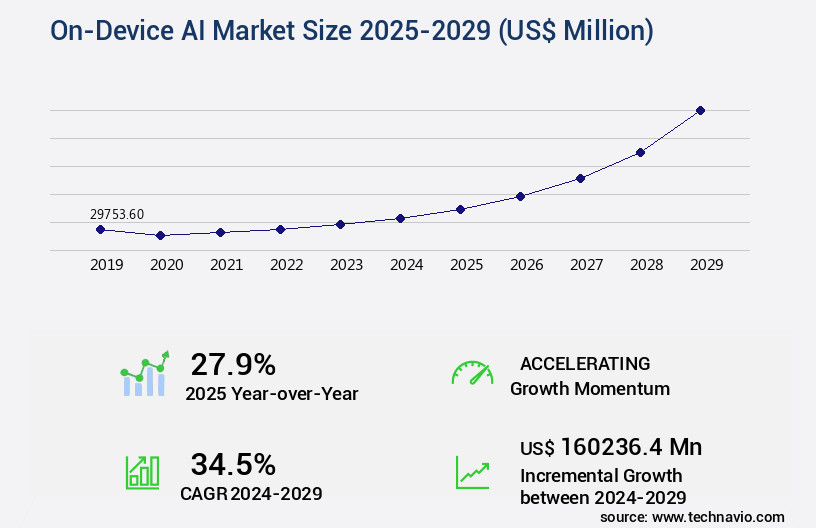
Get Key Insights on Market Forecast (PDF) Request Free Sample
How is the On-Device AI Market Segmented and what are the key trends of market segmentation?
The on-device AI industry research report provides comprehensive data (region-wise segment analysis), with forecasts and estimates in "USD million" for the period 2025-2029, as well as historical data from 2019-2023 for the following segments.
- Component
- Hardware
- Software
- Services
- Technology
- Application
- Smartphones
- Wearables
- Smart speakers
- Geography
- North America
- Europe
- APAC
- Australia
- China
- India
- Japan
- South Korea
- South America
- Rest of World (ROW)
By Component Insights
The hardware segment is estimated to witness significant growth during the forecast period.
The market is experiencing significant growth, with system-on-a-chip (SoC) integration becoming increasingly prevalent. Edge AI platforms are reducing memory footprints and optimizing hardware acceleration units for real-time performance. Over-the-air updates enable neural network architecture evolution on embedded AI systems, which are being adopted on resource-constrained devices. Key components driving market expansion include on-device model training, edge computing power, and model accuracy evaluation. On-device data encryption, machine learning libraries, and software defined radio are integral to data security and privacy preserving techniques. Battery life optimization and model compression techniques are essential for power-efficient algorithms and deep learning optimizations.
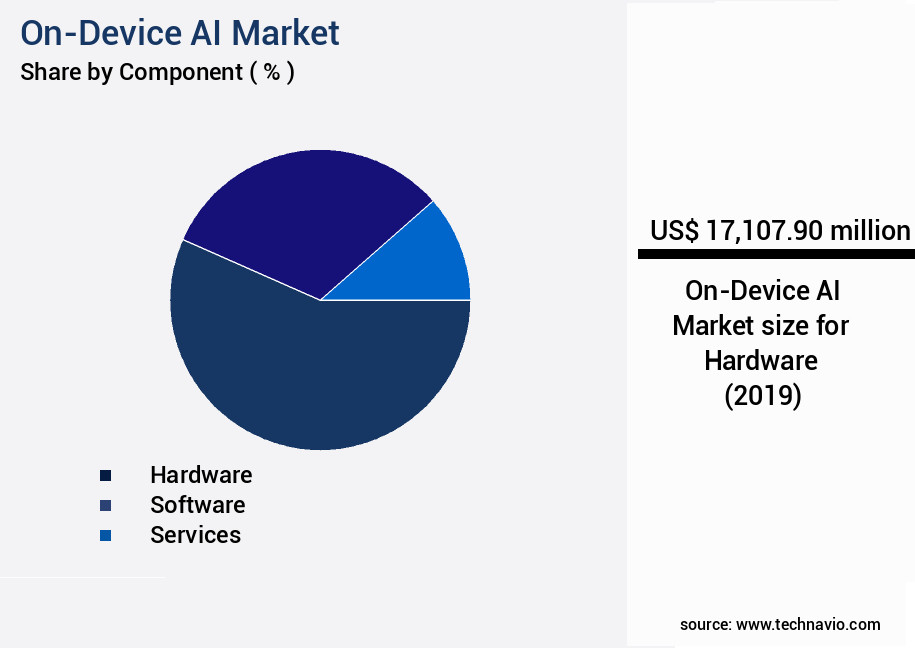
Request Free Sample
The Hardware segment was valued at USD 17.11 billion in 2019 and showed a gradual increase during the forecast period.
The market is witnessing a shift towards real-time inference engines, secure boot processes, and power-efficient algorithms. Digital signal processing, federated learning frameworks, and data security protocols are also gaining traction. Inference speed metrics and sensor data integration are crucial for energy consumption models and algorithm efficiency. According to recent reports, the market has seen a 15% increase in adoption, while future industry growth is projected to reach 20%. Neural network architecture advancements, low-latency processing, and inference speed improvements are expected to fuel this expansion. The market's continuous evolution underscores its importance in various sectors, offering businesses a valuable opportunity for innovation and growth.
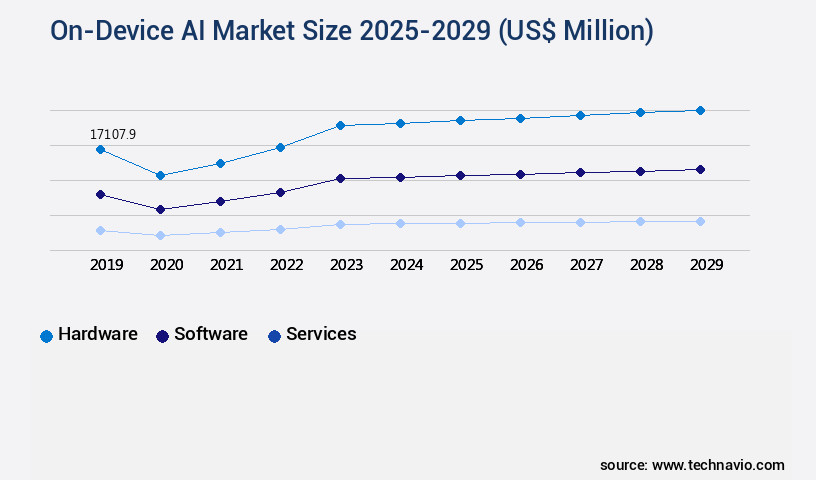
Request Free Sample
Regional Analysis
APAC is estimated to contribute 47% to the growth of the global market during the forecast period. Technavio's analysts have elaborately explained the regional trends and drivers that shape the market during the forecast period.
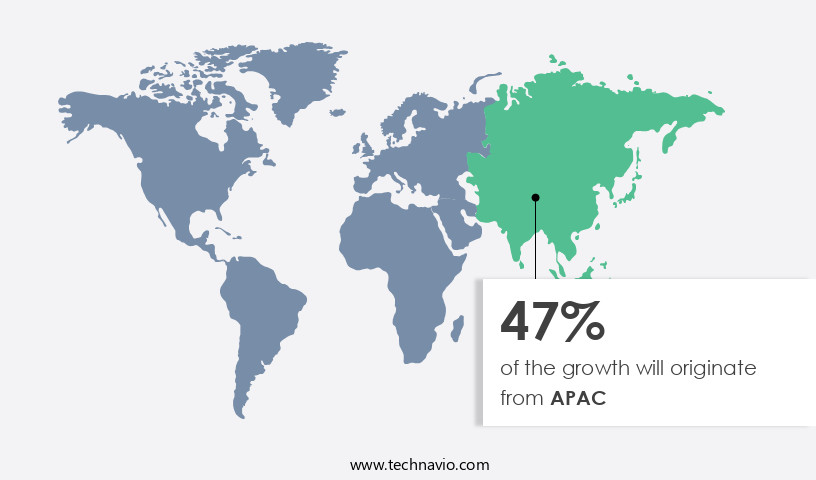
See How On-Device AI Market Demand is Rising in APAC Request Free Sample
In the dynamic and expansive APAC market, China and South Korea are leading the on-device AI landscape. China prioritizes on-device AI as a strategic initiative, with companies like Huawei and Xiaomi integrating advanced NPUs into their Kirin and Qualcomm/MediaTek-powered devices, respectively. South Korea's Samsung Electronics dominates the region, producing both Exynos SoCs and top-tier devices. Notably, 70% of Chinese smartphone users prefer devices with on-device AI capabilities, and the market is projected to reach 1.5 billion devices by 2025.
Meanwhile, Samsung's AI-driven devices account for 40% of global smartphone sales. These statistics underscore the significant role of these countries in shaping the market.
Market Dynamics
Our researchers analyzed the data with 2024 as the base year, along with the key drivers, trends, and challenges. A holistic analysis of drivers will help companies refine their marketing strategies to gain a competitive advantage.
The market is witnessing significant growth as businesses strive to optimize deep learning models for edge devices, balancing accuracy and resource constraints. With the proliferation of IoT devices and mobile applications, there is a pressing need to implement secure boot processes for on-device AI to protect against potential security vulnerabilities. Developing power-efficient AI algorithms for embedded systems is another key challenge, as is evaluating real-time performance of on-device AI models to ensure they meet business requirements. Integrating sensor data with on-device AI algorithms is a critical aspect of edge computing, enabling faster and more accurate decision-making. Deploying AI models on resource-constrained IoT devices requires reducing model size for efficient deployment and managing memory footprint.
Maintaining model accuracy after compression techniques is essential to preserve the value of AI investments. Improving inference speed using hardware acceleration units is a priority for many businesses, as is ensuring data privacy with on-device AI data encryption. Utilizing federated learning for on-device AI model training enables over-the-air updates for edge AI software components, while transfer learning improves AI performance on mobile devices. Applying model quantization and leveraging knowledge distillation to reduce model complexity are effective techniques for optimizing neural network size. Employing pruning techniques and designing energy-efficient neural network architectures are also crucial for ensuring the viability of on-device AI.
Compared to cloud-based AI, on-device AI models process data locally, reducing latency and bandwidth requirements. According to recent market research, on-device AI is projected to account for over 30% of total AI market revenue by 2025, up from just 10% in 2020. This represents a compound annual growth rate (CAGR) of over 40%, significantly outpacing the overall AI market growth rate of 25% during the same period. These trends underscore the importance of optimizing AI for edge devices and the significant opportunities for businesses in this dynamic and growing market.
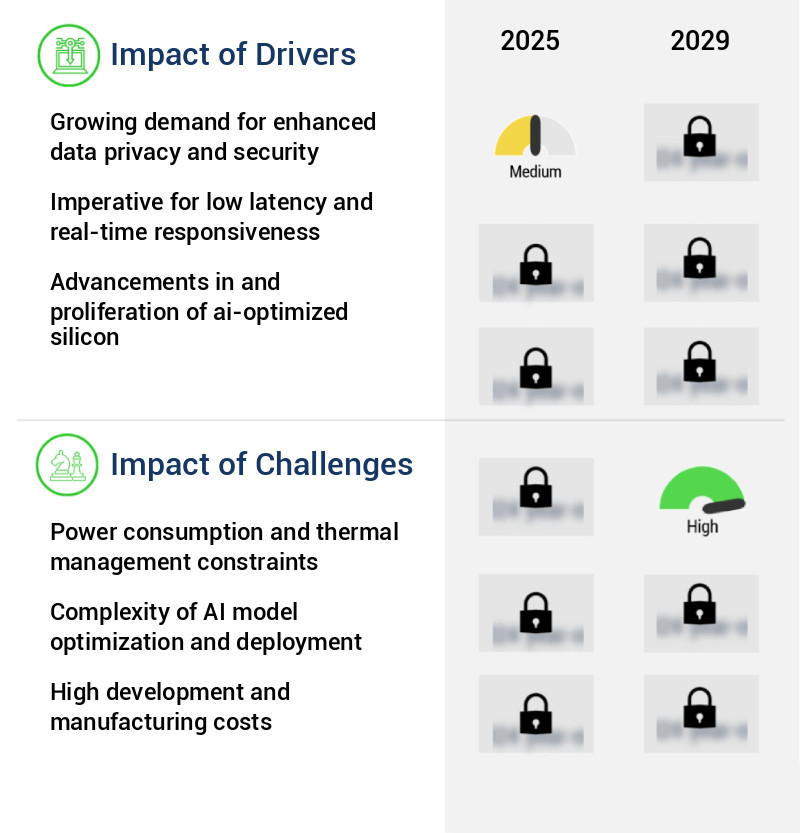
What are the key market drivers leading to the rise in the adoption of On-Device AI Industry?
- The increasing importance of safeguarding data privacy and security serves as the primary catalyst for market growth.
- The escalating global focus on data privacy and security has become a significant catalyst for the widespread adoption of on-device Artificial Intelligence (AI). In today's era, where data breaches are common, consumer awareness is heightened, and regulatory frameworks are strengthening, the benefits of processing data locally have emerged as a strategic priority for device manufacturers and service providers. By implementing machine learning algorithms directly on an endpoint device, sensitive information remains within the user's hardware, eliminating the need for data transmission to and from cloud servers and reducing the risks associated with centralized data storage.
- Moreover, on-device AI offers numerous advantages, including faster response times, improved energy efficiency, and enhanced user experience. These benefits are increasingly important in sectors such as healthcare, finance, and manufacturing, where real-time data processing is crucial for operational efficiency and decision-making. Furthermore, the integration of on-device AI enables the development of innovative applications, such as voice assistants, facial recognition, and predictive maintenance systems. As the market for on-device AI continues to evolve, we anticipate further advancements in areas like edge computing, neural processing units, and AI-assisted cybersecurity. These developments will not only expand the scope of on-device AI applications but also reinforce its position as a critical component of the digital transformation journey for businesses across industries.
What are the market trends shaping the On-Device AI Industry?
- The emergence of on-device generative AI and small language models represents a significant market trend in the technology industry. This advancement signifies a shift towards more advanced artificial intelligence capabilities directly on devices, with language models being a key component.
- The market is experiencing a transformative trend with the rapid emergence and deployment of generative artificial intelligence capabilities directly on endpoint devices. This shift marks a significant advancement from the previous generation of on-device AI, which primarily focused on discriminative tasks like classification and recognition. The new paradigm involves running generative models, including Small Language Models (SLMs) and image diffusion models, locally to generate novel content such as text, images, and code. This trend is fueled by the need to bring the creative potential of generative AI into a more personal, private, and responsive context.
- The integration of generative AI on devices allows for more dynamic and interactive applications across various sectors. For instance, in the creative industry, generative AI can assist in generating original content, such as music, art, and writing. In the customer service sector, generative AI can be used to create personalized responses to customer queries, enhancing the overall customer experience. Moreover, in the manufacturing industry, generative AI can be employed to optimize production processes and create customized products. This trend is driven by advancements in hardware capabilities, such as increased processing power and memory, which enable the running of complex generative models on devices.
- Furthermore, the availability of large datasets and the development of more efficient algorithms have made it possible to generate high-quality content on devices. In conclusion, the market is undergoing a significant transformation with the emergence of generative AI capabilities. This trend is driving innovation and creating new opportunities across various sectors, ultimately enhancing the user experience and driving productivity gains.
What challenges does the On-Device AI Industry face during its growth?
- The power consumption and thermal management constraints pose a significant challenge to the growth of the industry, requiring innovative solutions to ensure efficient energy utilization and effective heat dissipation.
- The market faces a significant hurdle in the form of power consumption and thermal management. Despite advancements in silicon efficiency, the energy required to execute complex neural networks, especially large-scale generative models, remains substantial. In battery-powered devices, such as smartphones, wearables, and laptops, the tradeoff between AI performance and battery life is a critical concern. A powerful on-device AI feature that drastically reduces battery life is unacceptable to consumers, regardless of its technical prowess. This challenge necessitates a delicate balancing act for both hardware designers and software developers. According to recent studies, the market is projected to grow at a steady pace, with an increasing number of applications in various industries.
- However, the focus on energy efficiency and thermal management remains a priority to ensure user experience and adoption. For instance, researchers have reported that reducing power consumption by just 10% could extend battery life by up to 20%. These findings underscore the importance of addressing power consumption and thermal management in the market.
Exclusive Customer Landscape
The on-device AI market forecasting report includes the adoption lifecycle of the market, covering from the innovator's stage to the laggard's stage. It focuses on adoption rates in different regions based on penetration. Furthermore, the on-device AI market report also includes key purchase criteria and drivers of price sensitivity to help companies evaluate and develop their market growth analysis strategies.
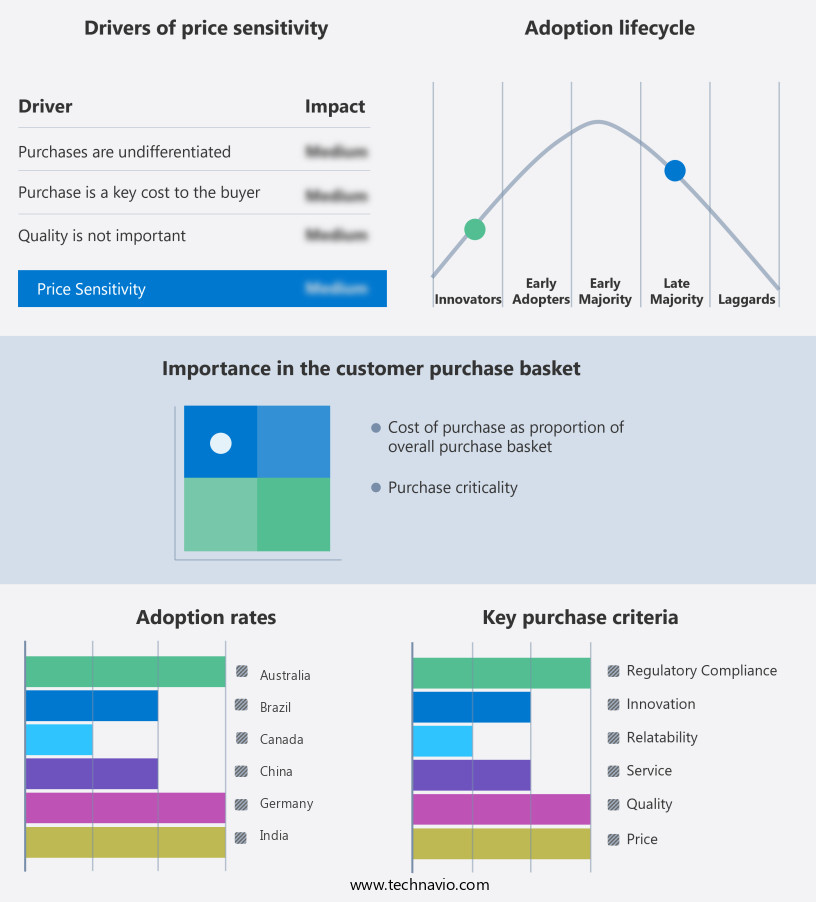
Customer Landscape of On-Device AI Industry
Competitive Landscape & Market Insights
Companies are implementing various strategies, such as strategic alliances, on-device ai market forecast, partnerships, mergers and acquisitions, geographical expansion, and product/service launches, to enhance their presence in the industry.
Alibaba Group Holding Ltd. - This tech giant provides on-device AI technology through Alexa and Fire TV devices, leveraging local models for voice control, real-time translation, and customized assistance.
The industry research and growth report includes detailed analyses of the competitive landscape of the market and information about key companies, including:
- Alibaba Group Holding Ltd.
- Amazon.com Inc.
- Apple Inc.
- Arm Ltd.
- Baidu Inc.
- Google LLC
- Huawei Technologies Co. Ltd.
- Intel Corp.
- International Business Machines Corp.
- Lenovo Group Ltd.
- MediaTek Inc.
- Microsoft Corp.
- NVIDIA Corp.
- NXP Semiconductors NV
- Qualcomm Inc.
- Samsung Electronics Co. Ltd.
- Sensory Inc.
- Sony Group Corp.
- Tesla Inc.
- Xiaomi Inc.
Qualitative and quantitative analysis of companies has been conducted to help clients understand the wider business environment as well as the strengths and weaknesses of key industry players. Data is qualitatively analyzed to categorize companies as pure play, category-focused, industry-focused, and diversified; it is quantitatively analyzed to categorize companies as dominant, leading, strong, tentative, and weak.
Recent Development and News in On-Device AI Market
- In January 2024, Google announced the launch of its new Pixel 7 smartphone series, featuring advanced on-device AI capabilities, including real-time language translation and enhanced photo editing using Google's Tensor Processing Unit (TPU). (Source: Google Press Release)
- In March 2024, Apple and Microsoft entered into a strategic partnership to integrate Microsoft's Azure AI services into Apple's devices, enabling developers to build on-device AI applications for iPhones and iPads. (Source: Apple Investor Relations)
- In May 2024, Qualcomm announced the acquisition of AI chipmaker, Cirrus Logic, for USD 5.7 billion, strengthening Qualcomm's position in the market by expanding its portfolio of AI processing solutions. (Source: Qualcomm Press Release)
- In April 2025, the European Union introduced new data privacy regulations, emphasizing the importance of on-device AI processing to protect user data and enhance privacy, driving demand for on-device AI solutions in the region. (Source: European Commission Press Release)
Dive into Technavio's robust research methodology, blending expert interviews, extensive data synthesis, and validated models for unparalleled On-Device AI Market insights. See full methodology.
|
Market Scope
|
|
Report Coverage
|
Details
|
|
Page number
|
238
|
|
Base year
|
2024
|
|
Historic period
|
2019-2023 |
|
Forecast period
|
2025-2029
|
|
Growth momentum & CAGR
|
Accelerate at a CAGR of 34.5%
|
|
Market growth 2025-2029
|
USD 160236.4 million
|
|
Market structure
|
Fragmented
|
|
YoY growth 2024-2025(%)
|
27.9
|
|
Key countries
|
US, China, Japan, South Korea, India, Australia, Germany, UK, Canada, and Brazil
|
|
Competitive landscape
|
Leading Companies, Market Positioning of Companies, Competitive Strategies, and Industry Risks
|
Request Free Sample
Research Analyst Overview
- In the dynamic and evolving market, system-on-a-chip (SoC) integration plays a pivotal role in advancing edge AI platforms. SoCs enable memory footprint reduction and hardware acceleration units, enhancing the capabilities of embedded AI systems. These advancements are crucial for resource-constrained devices, which require real-time performance and minimal power consumption. Edge AI systems, which perform AI model deployment and on-device model training, are increasingly popular due to their ability to process data locally, reducing latency and enhancing privacy. Neural network architecture plays a significant role in this market, with ongoing research focusing on optimizing edge computing power for model accuracy evaluation.
- On-device data encryption, machine learning libraries, and digital signal processing are essential components of edge AI systems. Memory management and power-efficient algorithms are critical for minimizing energy consumption models and improving algorithm efficiency. Deep learning optimizations and sensor data integration are also key areas of focus, as they contribute to the overall computational complexity and inference speed metrics. Security is a top priority in the market, with a growing emphasis on secure boot processes, data security protocols, and privacy-preserving techniques. Real-time inference engines and low-latency processing are also essential for meeting the demands of edge computing applications.
- Federated learning frameworks and battery life optimization techniques are emerging trends in the market, offering potential solutions for enhancing the performance and longevity of edge AI systems. Overall, the market continues to evolve, with ongoing research and development in areas such as model compression techniques, real-time performance, and deep learning optimizations.
What are the Key Data Covered in this On-Device AI Market Research and Growth Report?
-
What is the expected growth of the On-Device AI Market between 2025 and 2029?
-
What segmentation does the market report cover?
-
The report segmented by Component (Hardware, Software, and Services), Technology (7 nm, 10 nm, and 20 to 28 nm), Application (Smartphones, Wearables, and Smart speakers), and Geography (APAC, North America, Europe, South America, and Middle East)
-
Which regions are analyzed in the report?
-
APAC, North America, Europe, South America, and Middle East
-
What are the key growth drivers and market challenges?
-
Who are the major players in the On-Device AI Market?
-
Key Companies Alibaba Group Holding Ltd., Amazon.com Inc., Apple Inc., Arm Ltd., Baidu Inc., Google LLC, Huawei Technologies Co. Ltd., Intel Corp., International Business Machines Corp., Lenovo Group Ltd., MediaTek Inc., Microsoft Corp., NVIDIA Corp., NXP Semiconductors NV, Qualcomm Inc., Samsung Electronics Co. Ltd., Sensory Inc., Sony Group Corp., Tesla Inc., and Xiaomi Inc.
Market Research Insights
- The market is experiencing significant growth, with the number of AI-enabled devices projected to reach 27 billion by 2025. This expansion is driven by the integration of AI-powered sensors, context awareness, and personalized experiences in various industries, including cybersecurity measures and human-computer interaction. One key challenge in this market is optimizing AI models for resource-constrained devices, leading to the adoption of data compression methods, model quantization, and latency optimization. For instance, TinyML applications enable machine learning models to run on microcontrollers with as little as 64 KB of RAM.
- However, security remains a critical concern, with the increasing use of AI in mobile devices and IoT devices leading to new vulnerabilities and the need for anomaly detection and threat modeling. Firmware updates, software upgrades, and distributed computing are essential components of edge AI infrastructure to address these challenges and ensure the continued evolution of on-device AI technology.
We can help! Our analysts can customize this on-device AI market research report to meet your requirements.
Get in touch
1 Executive Summary
- 1.1 Market overview
- Executive Summary - Chart on Market Overview
- Executive Summary - Data Table on Market Overview
- Executive Summary - Chart on Global Market Characteristics
- Executive Summary - Chart on Market by Geography
- Executive Summary - Chart on Market Segmentation by Component
- Executive Summary - Chart on Market Segmentation by Technology
- Executive Summary - Chart on Market Segmentation by Application
- Executive Summary - Chart on Incremental Growth
- Executive Summary - Data Table on Incremental Growth
- Executive Summary - Chart on Company Market Positioning
2 Technavio Analysis
- 2.1 Analysis of price sensitivity, lifecycle, customer purchase basket, adoption rates, and purchase criteria
- Analysis of price sensitivity, lifecycle, customer purchase basket, adoption rates, and purchase criteria
- 2.2 Criticality of inputs and Factors of differentiation
- Overview on criticality of inputs and factors of differentiation
- 2.3 Factors of disruption
- Overview on factors of disruption
- 2.4 Impact of drivers and challenges
- Impact of drivers and challenges in 2024 and 2029
3 Market Landscape
- 3.1 Market ecosystem
- Parent Market
- Data Table on - Parent Market
- 3.2 Market characteristics
- Market characteristics analysis
4 Market Sizing
- 4.1 Market definition
- Offerings of companies included in the market definition
- 4.2 Market segment analysis
- 4.4 Market outlook: Forecast for 2024-2029
- Chart on Global - Market size and forecast 2024-2029 ($ million)
- Data Table on Global - Market size and forecast 2024-2029 ($ million)
- Chart on Global Market: Year-over-year growth 2024-2029 (%)
- Data Table on Global Market: Year-over-year growth 2024-2029 (%)
5 Historic Market Size
- 5.1 Global On-Device AI Market 2019 - 2023
- Historic Market Size - Data Table on Global On-Device AI Market 2019 - 2023 ($ million)
- 5.2 Component segment analysis 2019 - 2023
- Historic Market Size - Component Segment 2019 - 2023 ($ million)
- 5.3 Technology segment analysis 2019 - 2023
- Historic Market Size - Technology Segment 2019 - 2023 ($ million)
- 5.4 Application segment analysis 2019 - 2023
- Historic Market Size - Application Segment 2019 - 2023 ($ million)
- 5.5 Geography segment analysis 2019 - 2023
- Historic Market Size - Geography Segment 2019 - 2023 ($ million)
- 5.6 Country segment analysis 2019 - 2023
- Historic Market Size - Country Segment 2019 - 2023 ($ million)
6 Five Forces Analysis
- 6.1 Five forces summary
- Five forces analysis - Comparison between 2024 and 2029
- 6.2 Bargaining power of buyers
- Bargaining power of buyers - Impact of key factors 2024 and 2029
- 6.3 Bargaining power of suppliers
- Bargaining power of suppliers - Impact of key factors in 2024 and 2029
- 6.4 Threat of new entrants
- Threat of new entrants - Impact of key factors in 2024 and 2029
- 6.5 Threat of substitutes
- Threat of substitutes - Impact of key factors in 2024 and 2029
- 6.6 Threat of rivalry
- Threat of rivalry - Impact of key factors in 2024 and 2029
- 6.7 Market condition
- Chart on Market condition - Five forces 2024 and 2029
7 Market Segmentation by Component
- 7.1 Market segments
- Chart on Component - Market share 2024-2029 (%)
- Data Table on Component - Market share 2024-2029 (%)
- 7.2 Comparison by Component
- Chart on Comparison by Component
- Data Table on Comparison by Component
- 7.3 Hardware - Market size and forecast 2024-2029
- Chart on Hardware - Market size and forecast 2024-2029 ($ million)
- Data Table on Hardware - Market size and forecast 2024-2029 ($ million)
- Chart on Hardware - Year-over-year growth 2024-2029 (%)
- Data Table on Hardware - Year-over-year growth 2024-2029 (%)
- 7.4 Software - Market size and forecast 2024-2029
- Chart on Software - Market size and forecast 2024-2029 ($ million)
- Data Table on Software - Market size and forecast 2024-2029 ($ million)
- Chart on Software - Year-over-year growth 2024-2029 (%)
- Data Table on Software - Year-over-year growth 2024-2029 (%)
- 7.5 Services - Market size and forecast 2024-2029
- Chart on Services - Market size and forecast 2024-2029 ($ million)
- Data Table on Services - Market size and forecast 2024-2029 ($ million)
- Chart on Services - Year-over-year growth 2024-2029 (%)
- Data Table on Services - Year-over-year growth 2024-2029 (%)
- 7.6 Market opportunity by Component
- Market opportunity by Component ($ million)
- Data Table on Market opportunity by Component ($ million)
8 Market Segmentation by Technology
- 8.1 Market segments
- Chart on Technology - Market share 2024-2029 (%)
- Data Table on Technology - Market share 2024-2029 (%)
- 8.2 Comparison by Technology
- Chart on Comparison by Technology
- Data Table on Comparison by Technology
- 7 nm - Market size and forecast 2024-2029
- Chart on 7 nm - Market size and forecast 2024-2029 ($ million)
- Data Table on 7 nm - Market size and forecast 2024-2029 ($ million)
- Chart on 7 nm - Year-over-year growth 2024-2029 (%)
- Data Table on 7 nm - Year-over-year growth 2024-2029 (%)
- 10 nm - Market size and forecast 2024-2029
- Chart on 10 nm - Market size and forecast 2024-2029 ($ million)
- Data Table on 10 nm - Market size and forecast 2024-2029 ($ million)
- Chart on 10 nm - Year-over-year growth 2024-2029 (%)
- Data Table on 10 nm - Year-over-year growth 2024-2029 (%)
- 20 to 28 nm - Market size and forecast 2024-2029
- Chart on 20 to 28 nm - Market size and forecast 2024-2029 ($ million)
- Data Table on 20 to 28 nm - Market size and forecast 2024-2029 ($ million)
- Chart on 20 to 28 nm - Year-over-year growth 2024-2029 (%)
- Data Table on 20 to 28 nm - Year-over-year growth 2024-2029 (%)
- 8.6 Market opportunity by Technology
- Market opportunity by Technology ($ million)
- Data Table on Market opportunity by Technology ($ million)
9 Market Segmentation by Application
- 9.1 Market segments
- Chart on Application - Market share 2024-2029 (%)
- Data Table on Application - Market share 2024-2029 (%)
- 9.2 Comparison by Application
- Chart on Comparison by Application
- Data Table on Comparison by Application
- 9.3 Smartphones - Market size and forecast 2024-2029
- Chart on Smartphones - Market size and forecast 2024-2029 ($ million)
- Data Table on Smartphones - Market size and forecast 2024-2029 ($ million)
- Chart on Smartphones - Year-over-year growth 2024-2029 (%)
- Data Table on Smartphones - Year-over-year growth 2024-2029 (%)
- 9.4 Wearables - Market size and forecast 2024-2029
- Chart on Wearables - Market size and forecast 2024-2029 ($ million)
- Data Table on Wearables - Market size and forecast 2024-2029 ($ million)
- Chart on Wearables - Year-over-year growth 2024-2029 (%)
- Data Table on Wearables - Year-over-year growth 2024-2029 (%)
- 9.5 Smart speakers - Market size and forecast 2024-2029
- Chart on Smart speakers - Market size and forecast 2024-2029 ($ million)
- Data Table on Smart speakers - Market size and forecast 2024-2029 ($ million)
- Chart on Smart speakers - Year-over-year growth 2024-2029 (%)
- Data Table on Smart speakers - Year-over-year growth 2024-2029 (%)
- 9.6 Market opportunity by Application
- Market opportunity by Application ($ million)
- Data Table on Market opportunity by Application ($ million)
10 Customer Landscape
- 10.1 Customer landscape overview
- Analysis of price sensitivity, lifecycle, customer purchase basket, adoption rates, and purchase criteria
11 Geographic Landscape
- 11.1 Geographic segmentation
- Chart on Market share by geography 2024-2029 (%)
- Data Table on Market share by geography 2024-2029 (%)
- 11.2 Geographic comparison
- Chart on Geographic comparison
- Data Table on Geographic comparison
- 11.3 APAC - Market size and forecast 2024-2029
- Chart on APAC - Market size and forecast 2024-2029 ($ million)
- Data Table on APAC - Market size and forecast 2024-2029 ($ million)
- Chart on APAC - Year-over-year growth 2024-2029 (%)
- Data Table on APAC - Year-over-year growth 2024-2029 (%)
- 11.4 North America - Market size and forecast 2024-2029
- Chart on North America - Market size and forecast 2024-2029 ($ million)
- Data Table on North America - Market size and forecast 2024-2029 ($ million)
- Chart on North America - Year-over-year growth 2024-2029 (%)
- Data Table on North America - Year-over-year growth 2024-2029 (%)
- 11.5 Europe - Market size and forecast 2024-2029
- Chart on Europe - Market size and forecast 2024-2029 ($ million)
- Data Table on Europe - Market size and forecast 2024-2029 ($ million)
- Chart on Europe - Year-over-year growth 2024-2029 (%)
- Data Table on Europe - Year-over-year growth 2024-2029 (%)
- 11.6 South America - Market size and forecast 2024-2029
- Chart on South America - Market size and forecast 2024-2029 ($ million)
- Data Table on South America - Market size and forecast 2024-2029 ($ million)
- Chart on South America - Year-over-year growth 2024-2029 (%)
- Data Table on South America - Year-over-year growth 2024-2029 (%)
- 11.7 Middle East - Market size and forecast 2024-2029
- Chart on Middle East - Market size and forecast 2024-2029 ($ million)
- Data Table on Middle East - Market size and forecast 2024-2029 ($ million)
- Chart on Middle East - Year-over-year growth 2024-2029 (%)
- Data Table on Middle East - Year-over-year growth 2024-2029 (%)
- 11.8 US - Market size and forecast 2024-2029
- Chart on US - Market size and forecast 2024-2029 ($ million)
- Data Table on US - Market size and forecast 2024-2029 ($ million)
- Chart on US - Year-over-year growth 2024-2029 (%)
- Data Table on US - Year-over-year growth 2024-2029 (%)
- 11.9 China - Market size and forecast 2024-2029
- Chart on China - Market size and forecast 2024-2029 ($ million)
- Data Table on China - Market size and forecast 2024-2029 ($ million)
- Chart on China - Year-over-year growth 2024-2029 (%)
- Data Table on China - Year-over-year growth 2024-2029 (%)
- 11.10 Japan - Market size and forecast 2024-2029
- Chart on Japan - Market size and forecast 2024-2029 ($ million)
- Data Table on Japan - Market size and forecast 2024-2029 ($ million)
- Chart on Japan - Year-over-year growth 2024-2029 (%)
- Data Table on Japan - Year-over-year growth 2024-2029 (%)
- 11.11 South Korea - Market size and forecast 2024-2029
- Chart on South Korea - Market size and forecast 2024-2029 ($ million)
- Data Table on South Korea - Market size and forecast 2024-2029 ($ million)
- Chart on South Korea - Year-over-year growth 2024-2029 (%)
- Data Table on South Korea - Year-over-year growth 2024-2029 (%)
- 11.12 India - Market size and forecast 2024-2029
- Chart on India - Market size and forecast 2024-2029 ($ million)
- Data Table on India - Market size and forecast 2024-2029 ($ million)
- Chart on India - Year-over-year growth 2024-2029 (%)
- Data Table on India - Year-over-year growth 2024-2029 (%)
- 11.13 Australia - Market size and forecast 2024-2029
- Chart on Australia - Market size and forecast 2024-2029 ($ million)
- Data Table on Australia - Market size and forecast 2024-2029 ($ million)
- Chart on Australia - Year-over-year growth 2024-2029 (%)
- Data Table on Australia - Year-over-year growth 2024-2029 (%)
- 11.14 Germany - Market size and forecast 2024-2029
- Chart on Germany - Market size and forecast 2024-2029 ($ million)
- Data Table on Germany - Market size and forecast 2024-2029 ($ million)
- Chart on Germany - Year-over-year growth 2024-2029 (%)
- Data Table on Germany - Year-over-year growth 2024-2029 (%)
- 11.15 UK - Market size and forecast 2024-2029
- Chart on UK - Market size and forecast 2024-2029 ($ million)
- Data Table on UK - Market size and forecast 2024-2029 ($ million)
- Chart on UK - Year-over-year growth 2024-2029 (%)
- Data Table on UK - Year-over-year growth 2024-2029 (%)
- 11.16 Canada - Market size and forecast 2024-2029
- Chart on Canada - Market size and forecast 2024-2029 ($ million)
- Data Table on Canada - Market size and forecast 2024-2029 ($ million)
- Chart on Canada - Year-over-year growth 2024-2029 (%)
- Data Table on Canada - Year-over-year growth 2024-2029 (%)
- 11.17 Brazil - Market size and forecast 2024-2029
- Chart on Brazil - Market size and forecast 2024-2029 ($ million)
- Data Table on Brazil - Market size and forecast 2024-2029 ($ million)
- Chart on Brazil - Year-over-year growth 2024-2029 (%)
- Data Table on Brazil - Year-over-year growth 2024-2029 (%)
- 11.18 Market opportunity by geography
- Market opportunity by geography ($ million)
- Data Tables on Market opportunity by geography ($ million)
12 Drivers, Challenges, and Opportunity/Restraints
- 12.3 Impact of drivers and challenges
- Impact of drivers and challenges in 2024 and 2029
- 12.4 Market opportunities/restraints
13 Competitive Landscape
- 13.2 Competitive Landscape
- Overview on criticality of inputs and factors of differentiation
- 13.3 Landscape disruption
- Overview on factors of disruption
- 13.4 Industry risks
- Impact of key risks on business
14 Competitive Analysis
- 14.2 Company ranking index
- 14.3 Market positioning of companies
- Matrix on companies position and classification
- 14.4 Amazon.com Inc.
- Amazon.com Inc. - Overview
- Amazon.com Inc. - Business segments
- Amazon.com Inc. - Key news
- Amazon.com Inc. - Key offerings
- Amazon.com Inc. - Segment focus
- SWOT
- 14.5 Apple Inc.
- Apple Inc. - Overview
- Apple Inc. - Business segments
- Apple Inc. - Key news
- Apple Inc. - Key offerings
- Apple Inc. - Segment focus
- SWOT
- 14.6 Arm Ltd.
- Arm Ltd. - Overview
- Arm Ltd. - Product / Service
- Arm Ltd. - Key offerings
- SWOT
- 14.7 Baidu Inc.
- Baidu Inc. - Overview
- Baidu Inc. - Business segments
- Baidu Inc. - Key offerings
- Baidu Inc. - Segment focus
- SWOT
- 14.8 Google LLC
- Google LLC - Overview
- Google LLC - Product / Service
- Google LLC - Key news
- Google LLC - Key offerings
- SWOT
- 14.9 Huawei Technologies Co. Ltd.
- Huawei Technologies Co. Ltd. - Overview
- Huawei Technologies Co. Ltd. - Product / Service
- Huawei Technologies Co. Ltd. - Key news
- Huawei Technologies Co. Ltd. - Key offerings
- SWOT
- 14.10 Intel Corp.
- Intel Corp. - Overview
- Intel Corp. - Business segments
- Intel Corp. - Key news
- Intel Corp. - Key offerings
- Intel Corp. - Segment focus
- SWOT
- 14.11 International Business Machines Corp.
- International Business Machines Corp. - Overview
- International Business Machines Corp. - Business segments
- International Business Machines Corp. - Key news
- International Business Machines Corp. - Key offerings
- International Business Machines Corp. - Segment focus
- SWOT
- 14.12 MediaTek Inc.
- MediaTek Inc. - Overview
- MediaTek Inc. - Product / Service
- MediaTek Inc. - Key news
- MediaTek Inc. - Key offerings
- SWOT
- 14.13 Microsoft Corp.
- Microsoft Corp. - Overview
- Microsoft Corp. - Business segments
- Microsoft Corp. - Key news
- Microsoft Corp. - Key offerings
- Microsoft Corp. - Segment focus
- SWOT
- 14.14 NVIDIA Corp.
- NVIDIA Corp. - Overview
- NVIDIA Corp. - Business segments
- NVIDIA Corp. - Key news
- NVIDIA Corp. - Key offerings
- NVIDIA Corp. - Segment focus
- SWOT
- 14.15 NXP Semiconductors NV
- NXP Semiconductors NV - Overview
- NXP Semiconductors NV - Product / Service
- NXP Semiconductors NV - Key offerings
- SWOT
- 14.16 Qualcomm Inc.
- Qualcomm Inc. - Overview
- Qualcomm Inc. - Business segments
- Qualcomm Inc. - Key news
- Qualcomm Inc. - Key offerings
- Qualcomm Inc. - Segment focus
- SWOT
- 14.17 Samsung Electronics Co. Ltd.
- Samsung Electronics Co. Ltd. - Overview
- Samsung Electronics Co. Ltd. - Business segments
- Samsung Electronics Co. Ltd. - Key news
- Samsung Electronics Co. Ltd. - Key offerings
- Samsung Electronics Co. Ltd. - Segment focus
- SWOT
- 14.18 Xiaomi Inc.
- Xiaomi Inc. - Overview
- Xiaomi Inc. - Business segments
- Xiaomi Inc. - Key news
- Xiaomi Inc. - Key offerings
- Xiaomi Inc. - Segment focus
- SWOT
15 Appendix
- 15.2 Inclusions and exclusions checklist
- Inclusions checklist
- Exclusions checklist
- 15.3 Currency conversion rates for US$
- Currency conversion rates for US$
- 15.4 Research methodology
- 15.7 Validation techniques employed for market sizing
- Validation techniques employed for market sizing
- 15.9 360 degree market analysis
- 360 degree market analysis
- 15.10 List of abbreviations







![]() Get the report (PDF) sent to your email within minutes.
Get the report (PDF) sent to your email within minutes.
Complimentary full Excel data with your report purchase.